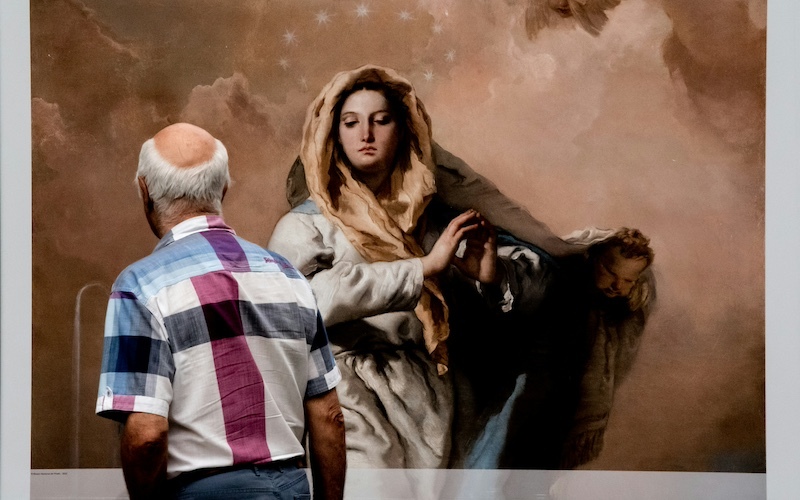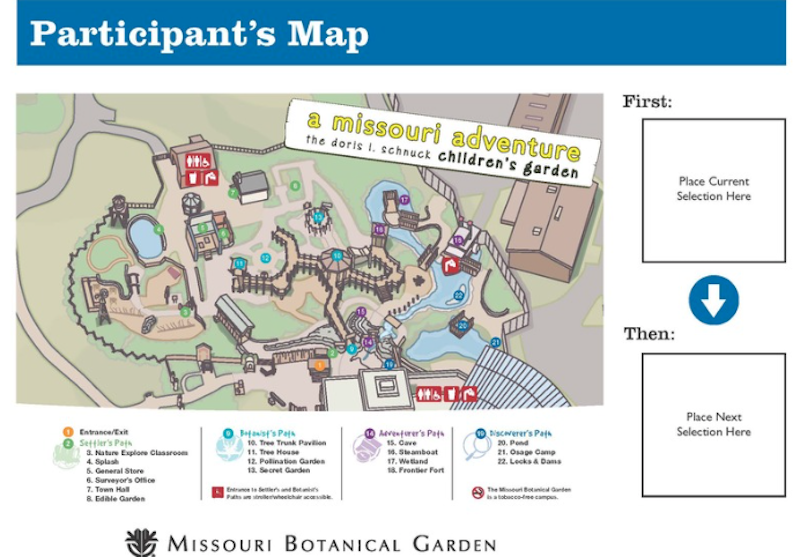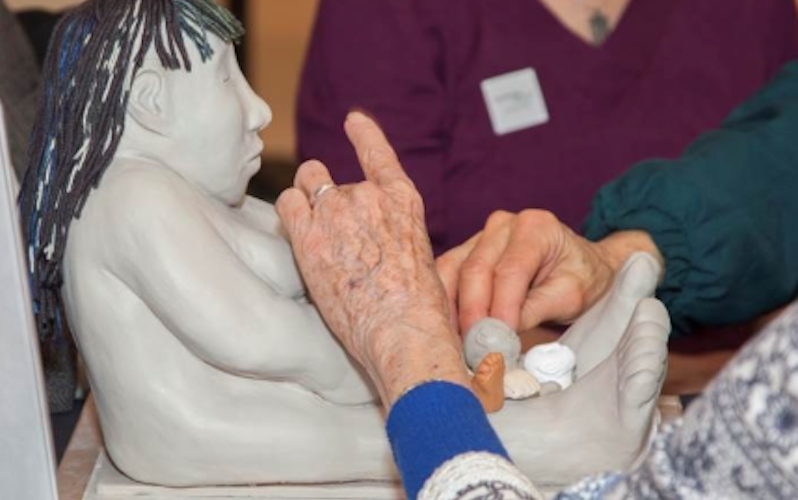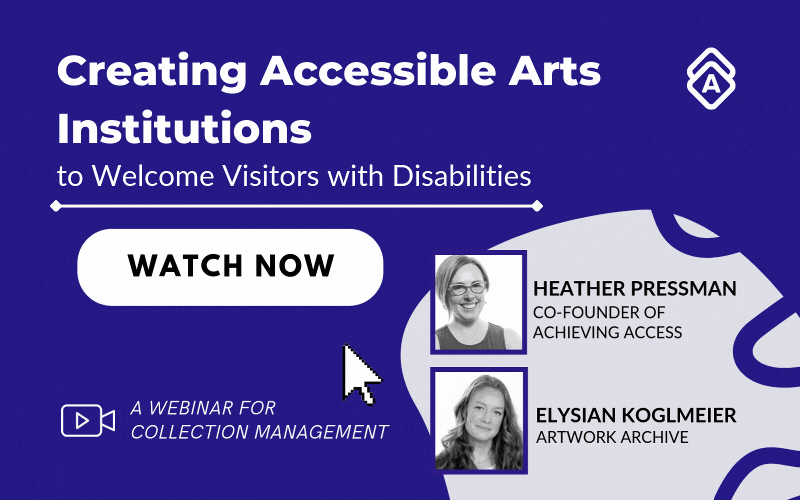 Image credit: Carlos Torres from Unsplash
Image credit: Carlos Torres from Unsplash
With 1 in 4 Americans living with a disability, chances are many of your visitors have access needs.
Ensuring accessibility in an arts institution goes beyond legal requirements—it's about fostering an inclusive environment where all visitors, regardless of ability, feel welcomed and can fully engage with your collections, exhibitions, and programs.
In a recent webinar hosted by Artwork Archive, accessibility expert Heather Pressman shared valuable insights on enhancing accessibility for visitors with disabilities. Building on her expertise in the webinar, this article explores 10 practical strategies to make your institution more accessible to all.
1. Engage with the disability community
Making an institution accessible should not be done in isolation—consulting with individuals who have lived experience ensures that accessibility efforts are meaningful. Ways to engage the community include:
-
Establishing an accessibility advisory board made up of people with disabilities who can provide insight on institutional improvements, act as advocates and support your training initiatives
-
Partnering with disability-led organizations to help lead programs and training sessions, to brainstorm and problem-solve, and provide feedback
-
Soliciting visitor feedback through surveys or focus groups to learn directly from those who use accessibility services.
2. Add access information to your website
This one can be really simple. Help visitors be prepared before entering your building. Odds are people with disabilities will be looking for this information.
-
Make an easy to find page on your website that lists any special accommodations or programs you offer.
-
Provide pathways to any pre-visit materials.
-
Include email to field questions, ex: [email protected]
-
Be sure to include any inaccessible spaces, programs, etc. as well! This way visitors aren’t surprised upon arrival.
3. Develop pre-visit materials
Provide resources to help visitors who need extra planning feel prepared and confident before their visit. This could include:
-
Downloadable maps (of institution, surrounding area, accessible parking)
-
Social story/videos (on website or emailed out)
-
A dedicated contact person to answer questions in advance
 Image from Heather Pressman's accessibility webinar presentation slides.
Image from Heather Pressman's accessibility webinar presentation slides.
4. Conduct staff training
Even the most accessible institution can be unwelcoming if staff are not trained in inclusive practices. Training can cover:
-
Disability awareness and sensitivity training so staff can interact respectfully and effectively with visitors of all abilities.
-
Best practices for offering assistance—staff should be trained to ask, “How can I assist you?” rather than making assumptions about a visitor’s needs.
-
Ensuring security and visitor service staff are equipped to handle accessibility-related requests and accommodations.
-
Using inclusive language when discussing accessibility features and interacting with visitors.
5. Complete an accessibility audit
Accessibility should be a continuous process, not a one-time fix. Institutions can:
-
Perform physical audits to assess ramps, seating, signage, and exhibit layouts.
-
Evaluate website accessibility using tools like the Web Content Accessibility Guidelines (WCAG) to ensure digital inclusion.
-
Gather visitor feedback on what is working and where improvements are needed.
-
Regularly update policies and practices as new technologies and best practices emerge.
6. Ensure physical accessibility
Many arts institutions are housed in older buildings that may not have been designed with accessibility in mind. Making physical spaces more inclusive includes:
-
Providing ramps and elevators alongside stairs to ensure wheelchair users and those with mobility aids can navigate the space easily.
-
Ensuring that doorways and hallways are wide enough to accommodate wheelchairs and walkers.
-
Maintaining clear, obstacle-free pathways by keeping exhibition layouts spacious and removing unnecessary furniture or barriers.
-
Offering accessible seating options at performances, lectures, and events with flexible seating arrangements for those who need additional space or companion seating.
7. Offer sensory-friendly options
Visitors with sensory sensitivities, including individuals with autism or PTSD, may feel overwhelmed in traditional art spaces. Institutions can accommodate them by:
-
Scheduling sensory-friendly hours with dimmer lighting, reduced noise levels, and fewer visitors to create a calmer environment. The Denver Art Museum has a Sensory-Friendly Mornings quarterly.
-
Creating designated quiet spaces where visitors can take a break from overstimulating areas.
-
Offering noise-canceling headphones at the front desk for those who may be sensitive to background sounds.
-
Using guided sensory maps to inform visitors about areas with bright lights, loud sounds, or crowded spaces.
 Image from Denver Art Museum and from Heather Pressman's accessibility webinar presentation slides.
Image from Denver Art Museum and from Heather Pressman's accessibility webinar presentation slides.
8. Make digital content accessible
A significant part of an institution’s engagement happens online. Digital accessibility ensures that all visitors can explore collections, purchase tickets, and engage with content regardless of their abilities. Steps to improve digital accessibility include:
-
Providing alternative text (alt text) for images so visitors using screen readers can understand visual content.
-
Ensuring videos have captions and transcripts for those who are deaf or hard of hearing.
-
Using high-contrast color schemes on websites and apps to improve readability for those with visual impairments.
-
Testing website compatibility with screen readers and making adjustments to improve navigation.
9. Provide multiple ways to engage
Not all visitors engage with art in the same way. Offering multiple ways to experience an exhibit or performance allows for broader inclusion. Strategies include:
-
Providing tactile versions of objects or 3D models for visitors with visual impairments.
-
If you’re a history or house museum and have many of one object, like a mortar and pestle, consider putting one out.
-
If you’re looking to make papers and documents in a library more accessible, then consider using a machine like Swell Form to create raised versions of illustrations.
-
-
Offering audio descriptions for performances, exhibitions, and digital content.
-
Creating large-print and Braille materials for exhibition guides and program booklets.
-
Developing interactive elements such as touchable replicas or verbal storytelling elements for those who prefer auditory learning.
-
Provide Sensory materials/bags for checkout for guests to use in exhibit and gallery spaces.
-
Plan for additional interpretation to remove barriers to engagement for visitors who are Deaf, hard of hearing, low-vision or blind. These include: American Sign Language, verbal descriptions, touch tours, and real-time captioning services for panel discussions and virtual events.
10. Improve signage and wayfinding
Clear, accessible signage ensures that visitors can navigate your institution independently. Consider the following improvements:
-
Using high-contrast, large-print fonts for readability by individuals with low vision.
-
Including Braille on signs and maps to help visually impaired visitors find their way.
-
Placing directional signage at a lower height to be visible to wheelchair users.
-
Incorporating QR codes on signs that link to audio guides or detailed information about accessibility features.
By implementing these 10 strategies, arts institutions can take meaningful steps toward creating spaces where everyone feels welcomed, valued, and able to fully experience the arts. Accessibility is an ongoing journey, and small, intentional changes can have a big impact.
Want to take the next step?
Start by conducting an accessibility audit, engaging with your community, and making a commitment to continuous improvement. Then upload the documents and correspondences from your efforts to your Artwork Archive account so you have them centralized for your team.
The arts should be for everyone—let’s make sure they are.
Watch the recording of Creating Accessible Arts Institutions to Welcome Visitors with Disabilities.





